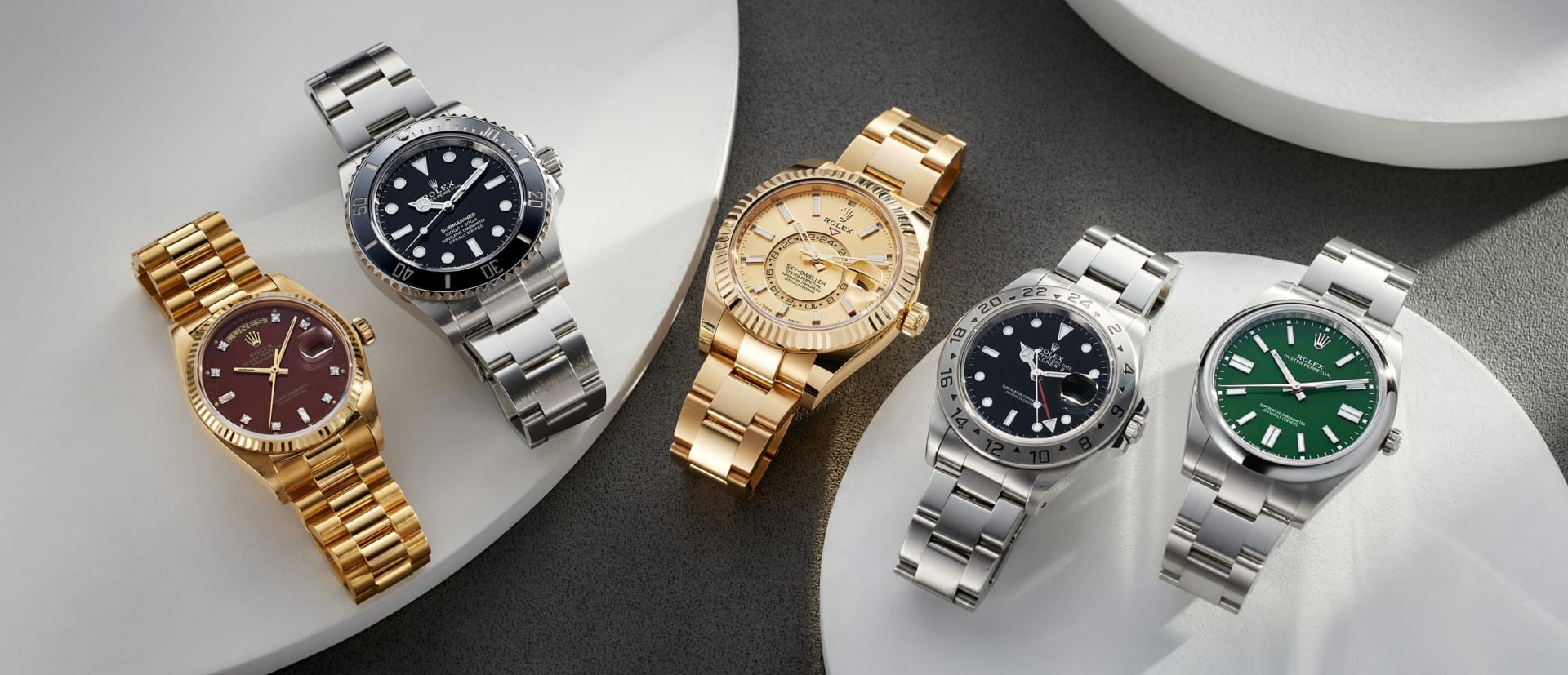Introduction: When and Who Started Rolex
Rolex, one of the world’s most iconic luxury watch brands, was founded in 1905 by Hans Wilsdorf and Alfred Davis in London, England. Originally known as Wilsdorf and Davis, the company later registered the Rolex trademark in 1908 and officially became Rolex SA. The goal was to create wristwatches that were not only elegant and stylish but also precise and reliable — something rarely achieved at the time.
Rolex quickly became a pioneer in watchmaking, revolutionizing the industry with groundbreaking innovations like the first waterproof wristwatch, the Oyster, introduced in 1926, and the Perpetual rotor self-winding mechanism in 1931.
What Types of Rolex Watches Exist Today?
Rolex has a wide variety of models that cater to luxury collectors, adventurers, athletes, and professionals. Some of the most famous and in-demand Rolex models include:
- Rolex Submariner – A diver’s watch with unmatched durability and elegance.
- Rolex Daytona – A racing chronograph designed for speed and precision.
- Rolex Datejust – Known for its classic design and date window.
- Rolex Day-Date (President) – A symbol of power, worn by world leaders.
- Rolex GMT-Master II – Built for travelers with dual time zone functionality.
- Rolex Explorer and Explorer II – Crafted for mountaineers and adventurers.
- Rolex Yacht-Master – Sporty yet luxurious, perfect for sailing enthusiasts.
- Rolex Milgauss – Resistant to magnetic interference, ideal for scientists.
Who Owns the World’s Most Expensive Rolex Watch?
The most expensive Rolex ever sold is the Paul Newman Rolex Daytona, owned and worn by the legendary actor Paul Newman. This unique and rare timepiece was sold at auction for a staggering $17.8 million in 2017. What makes it so valuable is its provenance, rarity, and personal connection to an iconic figure. It became a symbol of classic Hollywood, motorsports, and luxury.
Why Is Rolex Considered a Luxury Brand?
Rolex is synonymous with craftsmanship, precision, heritage, and exclusivity. Here’s why Rolex remains the pinnacle of luxury:
- Superior Craftsmanship: Each Rolex is handmade and tested for durability, accuracy, and aesthetics.
- In-House Manufacturing: From the gold alloys to the movements, everything is made in-house.
- Timeless Design: Rolex designs are both classic and modern, with little change over decades — enhancing collectability.
- Limited Supply, High Demand: Rolex watches are produced in limited quantities, creating exclusivity and prestige.
- Longevity & Value Retention: Rolex watches often appreciate over time and are passed down as family heirlooms.
The Cultural Status of Owning a Rolex Watch
Owning a Rolex is more than just having a luxury watch — it’s a status symbol. It represents:
- Success and Wealth: Many see a Rolex as proof of achieving financial goals.
- Sophistication: A Rolex adds a touch of elegance to any attire.
- Respect and Influence: In business or high-society circles, a Rolex can command respect.
- Collector’s Pride: Enthusiasts view Rolex as a work of art and a sound investment.
In many cultures, someone wearing a Rolex is automatically perceived as powerful, successful, and influential.
How People Love Rolex: Emotional and Aspirational Connection
Rolex is a dream watch for millions. It is often given to commemorate milestones like graduation, promotions, anniversaries, or retirement. Many people save for years to buy their first Rolex. It’s more than a watch—it’s a lifetime achievement.
Celebrities like Roger Federer, Cristiano Ronaldo, David Beckham, and Jay-Z all proudly wear Rolexes. This strong association with excellence and celebrity further boosts the brand’s aspirational value.
Conclusion: Rolex – More Than Just a Timepiece
From its inception in 1905 to dominating the luxury market today, Rolex has maintained its position as the king of watches. A Rolex is not just a timepiece—it’s a symbol of timeless luxury, social prestige, and personal success.
